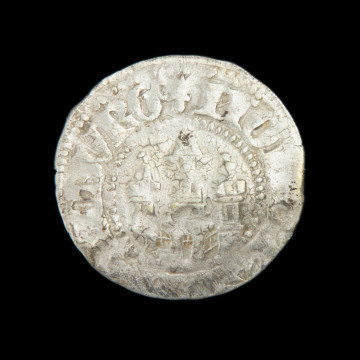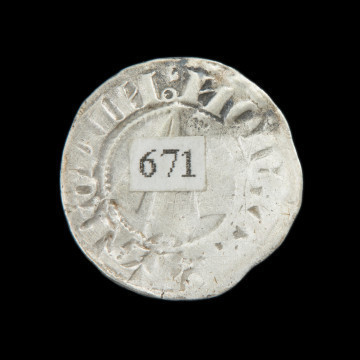
Witten
1370
National Museum in Szczecin
Part of the collection: Szczecin treasure from Podzamcze
At the end of the 13th century, the Hanseatic League was established, uniting the North and Baltic coast cities, including West Pomerania, supporting each other in trade and economy. In the 14th - 15th centuries, the union flourished; its most robust and most prominent city was Lübeck, situated within the boundaries of Holstein, a land transformed into a duchy of the Holy Roman Empire in the 15th century. In Lübeck, called the queen of the Hanseatic League, there was a parliament that set standard minting rules. The city was granted the right to mint coins in 1340 and became the initiator of introducing new monetary units into circulation in other Pomeranian centres. The coin minted in Lübeck since the end of the 14th century was a silver half-shilling, also called witten. One of them was discovered in 1999 in Szczecin together with other Pomeranian coins and costly costume ornaments. There mainly were West Pomeranian specimens among the coins, with single ones of Lübeck, Hamburg and Rostock. A half-shilling, bearing the inscription MONETA LUBICENSIS had an image of a two-headed eagle, which can still be seen in the municipal coat of arms of Lübeck. Medieval coins often contained symbols characteristic of an individual centre. The two-headed eagle, symbolising creative power and omniscience, was the emblem of the Byzantine Empire, the continuation of the Roman Empire. The Holy Roman Empire took over the idea of the Roman Empire in the Middle Ages. Also, Lübeck, originally a Slavic settlement, became part of the empire, which it emphasised on its coins, including half- shilling, with the inscription MONETA IMPERIALIS.
Małgorzata Peszko
Dimensions
cały obiekt: diameter: 2 cm
Object type
coin
Creation time / dating
Creation / finding place
Identification number
Location / status

1370
National Museum in Szczecin

XV wiek
National Museum in Szczecin

XV wiek
National Museum in Szczecin
DISCOVER this TOPIC
Museum of King Jan III's Palace at Wilanów
DISCOVER this PATH
Educational path